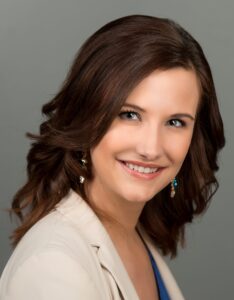 The Plywood and Composite Wood Products (PCWP) National Emissions Standard for Hazardous Air Pollutants (NESHAP) – 40 CFR Part 63, Subpart DDDD – applies to wood products plants that are major sources of hazardous air pollutants (HAP). These facilities include veneer, particleboard, medium density fiberboard, hardboard, fiberboard, oriented strandboard, and engineered wood products manufacturers. Lumber mills with dry kilns are also included in the PCWP source category. The primary HAPs emissions from these facilities include acetaldehyde, acrolein, formaldehyde, methanol, phenol, and propionaldehyde.
The Plywood and Composite Wood Products (PCWP) National Emissions Standard for Hazardous Air Pollutants (NESHAP) – 40 CFR Part 63, Subpart DDDD – applies to wood products plants that are major sources of hazardous air pollutants (HAP). These facilities include veneer, particleboard, medium density fiberboard, hardboard, fiberboard, oriented strandboard, and engineered wood products manufacturers. Lumber mills with dry kilns are also included in the PCWP source category. The primary HAPs emissions from these facilities include acetaldehyde, acrolein, formaldehyde, methanol, phenol, and propionaldehyde.
Following a Risk and Technology Review (RTR) of the PCWP NESHAP, the U.S. Environmental Protection Agency (EPA) completed revisions to the rule on June 8, 2020. This revisions were officially published to the Federal Register on August 13, 2020 with a correction published to the Federal Register on August 21, 2020. In general, the EPA found that the existing rule was sufficient in protecting human health and the environment; however, a few clarifications and revisions were added, including:
- Requiring testing every five years to improve performance of control technologies other than biofilters (already required to test every two years);
- Revisions to startup, shutdown, and malfunction (SSM) requirements; and
- Requiring electronic reporting of performance test results and semiannual reports.
All facilities subject to this rule must be in compliance with the changes before August 13, 2021, so let’s dig a little deeper on what these rule changes are and what they mean for your facility.
Revised Testing Requirements
The EPA has finalized the requirement to perform repeat emissions testing for process units controlled with control devices other than biofilters. These performance tests must be conducted within three years of August 13, 2020 or within 60 months of the previous test, whichever is later. These performance tests, as stated above, must be performed every five years, and results must be reported online using the Electronic Reporting Tool (ERT) and submitted through the EPA’s Compliance and Emissions Data Reporting Interface (CEDRI) database. After a repeat testing event, the facility must submit a notification of compliance status.
Another notable revision to testing requirements is the clarification that a regenerative catalytic oxidizer (RCO) catalyst check does not have be performed during the same calendar year that a performance test is conducted. The revised rule also provides a different allowable variability for the biofilter temperature operating range.
So how does your facility need to respond to these testing revisions?
- Conduct performance testing based on the schedule detailed in the rule revisions.
- Develop/update a facility compliance calendar to take into account these new requirements.
- Become familiar with ERT and CEDRI.
- Update biofilter temperature operating range.
- Review temperature sensor validation options.
Startup, Shutdown, and Malfunction
SSM exemptions and SSM plan requirements have been removed, and three new work practice provisions for startup and shutdown have been added (Table 3 of the PCWP NESHAP). These work practice provisions were added to address times when facilities are not able to follow the current rule’s requirements. The SSM work practice revisions are as follows:
- Process units and control systems undergoing safety-related shutdown. Personnel are required to follow documented site-specific procedures such as the use of automated controls or other measures that have been developed to protect workers and equipment. These work practice standards should ensure that the flow of raw materials and fuel/process heat cease and material is removed from the process unit(s) as quickly as possible.
- Pressurized refiners undergoing startup or shutdown. Exhaust gases must be routed from the pressurized refiner to the dryer control system no later than 15 minutes after wood is fed to the pressurized refiner during startup. Wood flow into the pressurized refiner must also be stopped no more than 15 minutes after wood fiber and exhaust gases from the pressurized refiner stop being route to the dryer during shutdown.
- Direct-fired softwood veneer dryers undergoing startup or shutdown of gas-fired burners. These changes apply to veneer dryer gas burner lighting and re-lighting (characterized as a startup activity). Facilities must cease feeding green veneer into the softwood veneer dryer and the amount of time these dryers are vented to the atmosphere must be minimized during burner re-lighting.
So how does your facility need to respond to these SSM revisions?
- Create an Emissions Minimization Plan and implement in place of your previous SSM Plan. Ensure that the Emissions Minimization Plan is in compliance with work practice standard revisions.
- Train employees on new work practice standards, as applicable.
- Evaluate if existing programming is sufficient in addressing/documenting SSM work practices.
- Evaluate if recordkeeping for the facility is in accordance with rule changes.
- Develop quantifiable ways to estimate excess emissions during deviations.
Other Considerations
As stated previously, lumber mills with dry kilns are included in this PCWP NESHAP. In 2007, the EPA was tasked with further rulemaking to address and reduce HAP emissions from kilns – and presses. This current revised rule does not include new requirements for kilns or presses; however, please keep in mind that the EPA has indicated another rule revision, which will address kilns and/or presses, is imminent.
If you need any help understanding these revisions, developing a compliance calendar for additional performance testing, compiling an Emissions Minimization Plan, developing algorithms for excess emissions, etc. in order to comply with these rule revisions, please don’t hesitate to contact us here at PPM. We are happy to help!
Contributed by:
Annie McIlwain
District Manager, Jackson, MS Office
(601) 956-8233

